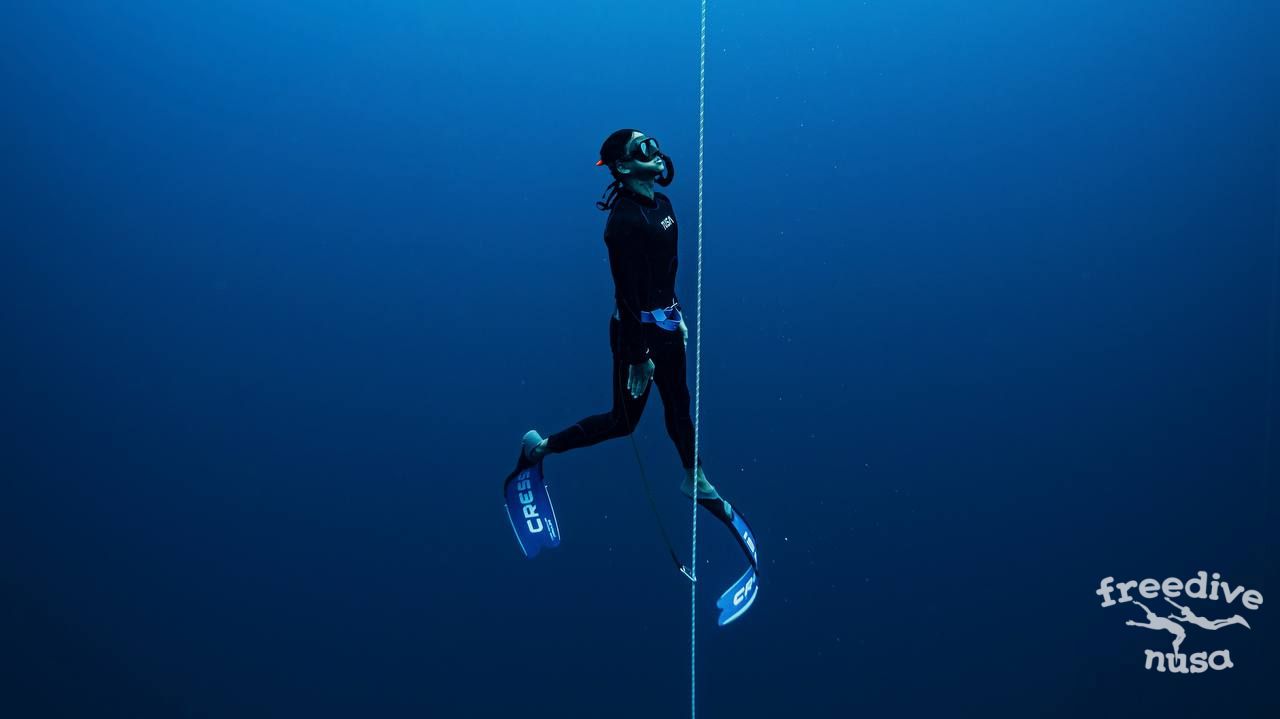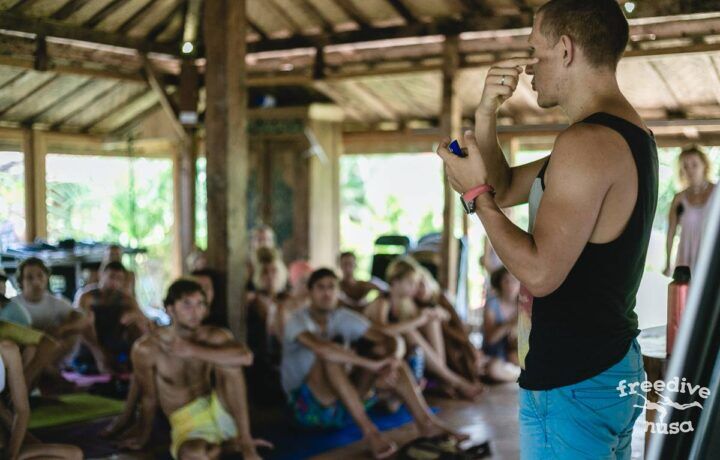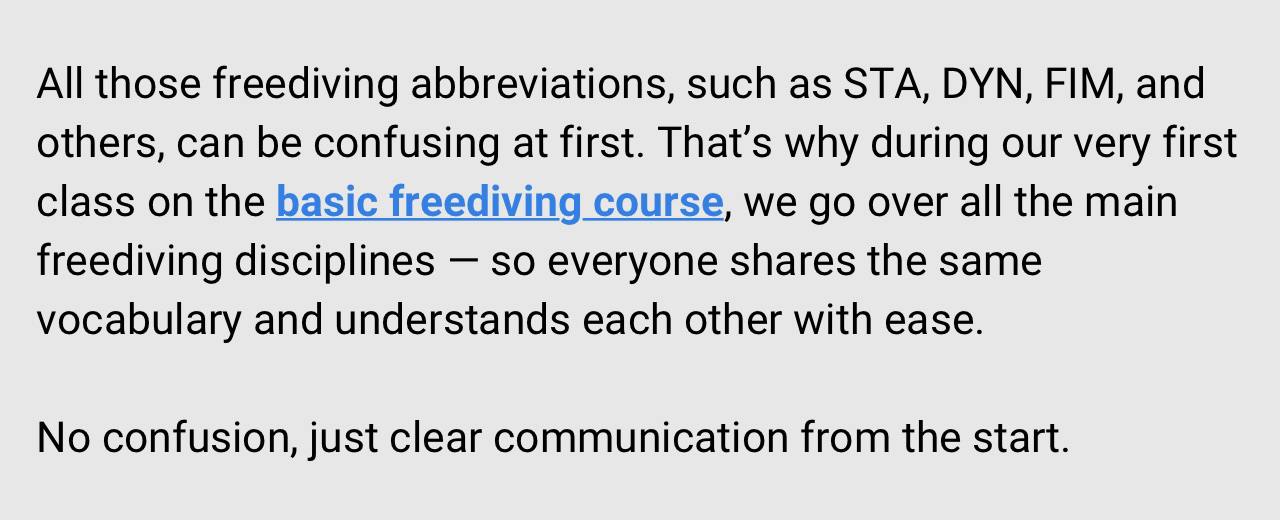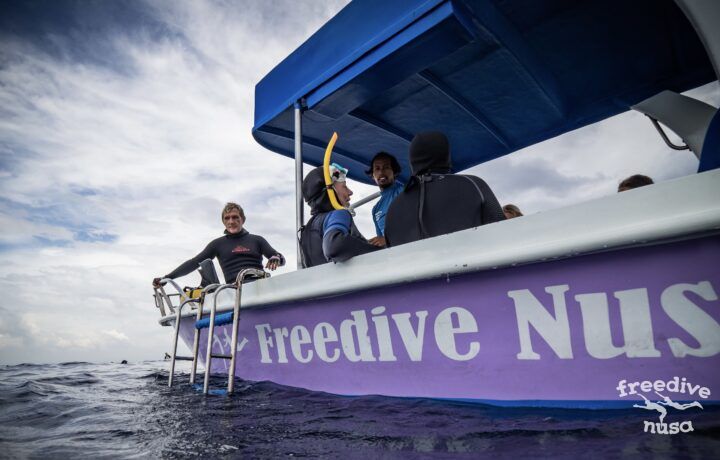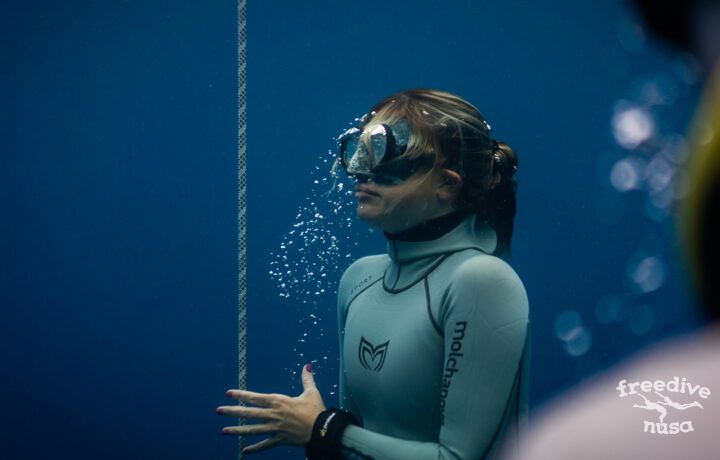Freediving is a young and actively developing sport. It has its own key personalities, terminology, myths surrounding it, and quite a long history. Below, we listed the basic terms, concepts, and definitions in freediving that you should know to speak the same language with your friends and colleagues.
General Terms
Apnea – The cessation of respiratory airflow or a voluntary breath-hold. Freediving may also be called apnea diving.
Breathing – The process of moving air into and out of the lungs to facilitate gas exchange with the internal environment, mostly by bringing in oxygen and flushing out carbon dioxide.
Static apnea (STA) – One of the types of freediving when the diver attempts to hold his or her breath for as long as possible while their respiratory tracts are immersed in water. This is also the only discipline which measures the duration of the dive.
Dynamic apnea – A common name for freediving disciplines when a freediver swims horizontally underwater for a long distance, usually in a swimming pool, whilst wearing bi-fins (DYNB), monofin (DYN), or without fins (DNF). The goal is to swim as long as possible, time doesn’t count.
Constant Weight – Diving to depth and back, with bi-fins or a monofin, wearing the same amount of weight for the descent and ascent. There are 3 different disciplines: constant weight no fins (CNF), constant weight with bi-fins (CWTB), constant weight with monofin (CWT).
Free Immersion (FIM) – Diving to depth and back by pulling down and back up a dive line, wearing the same amount of weight for the descent and ascent without fins.
Variable Weight (VWT) – Diving to depth using weight, then the weight stays at the bottom and freediver ascends by finning or pulling on a dive line using the arms.
No Limits (NLT) – Diving to depth using weight, and then using a lift-bag or other buoyancy device to return to the surface.
Equalization – Equalization of pressure between your body cavities and the surrounding environment during your diving to depth. There are three main air spaces to equalize: middle ear, sinuses, and mask. There are a number of techniques that can be used to equalize the pressure in your air spaces, including Frenzel and Valsalva maneuvers.
Frenzel Maneuver – Pushing with your tongue or cheek muscles against your pinched nostrils to create air pressure.
Valsalva Method – Exhaling against pinched nostrils and using the air in your lungs to create pressure.
Contraction – An involuntary spasm in your respiratory muscles caused by an elevated level of carbon dioxide in your body and the rising urge to breathe.
Soft palate – A mobile fold of soft tissue that separates your nose and mouth cavities and directs the flow of air in and out of your lungs.
Surface interval – A required minimum interval which freediver should spend at the surface between two dives to minimize the risk of decompression illness.
Freefall – A state when the diver reaches sufficient negative buoyancy on a dive to sink without physical effort.
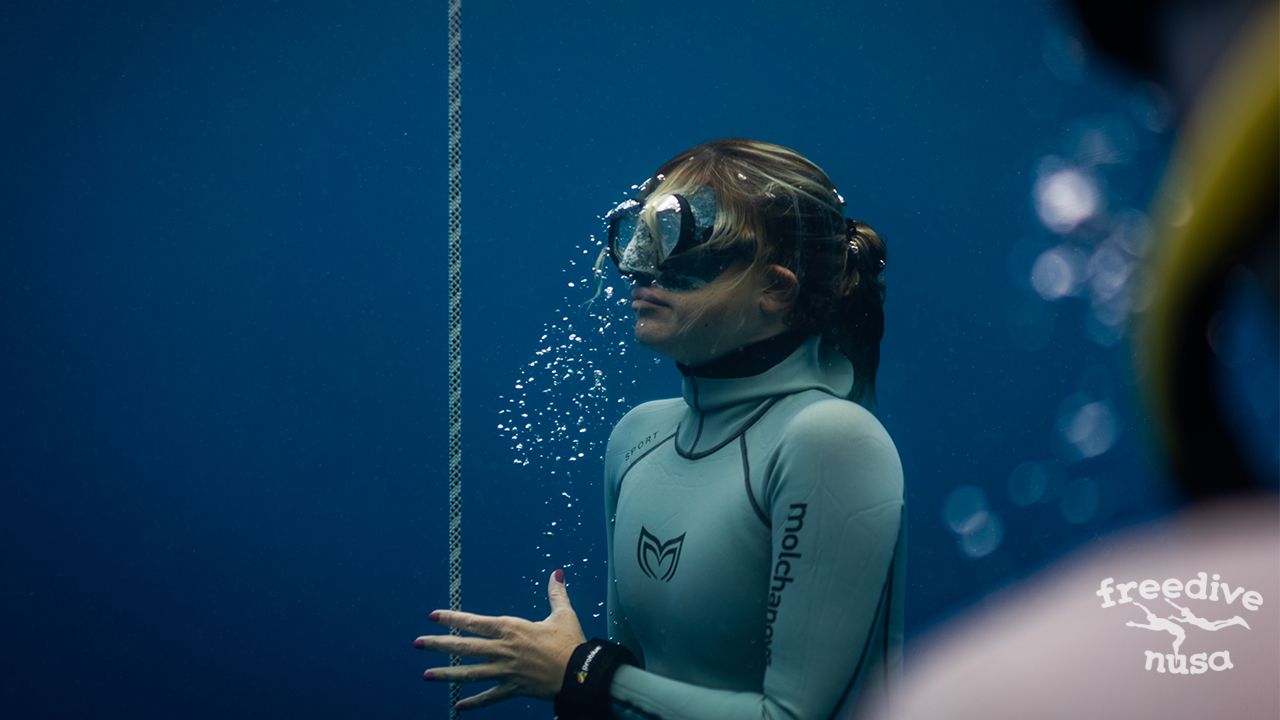
Safety
Hyperventilation — Any type or pace of breath exceeding your body’s needs. Symptoms of hyperventilation include light-headedness and dizziness, tingling in the fingers or other parts of the body, euphoria, and an increased heart rate.
Blackout – The loss of consciousness due to insufficient levels of oxygen in the body.
Samba or Loss of Motor Control (LMC) – Involuntary contractions generally develop in the neck, shoulders, arms, and occasionally in the leg muscles. A loss of motor control can happen following a freedive if your oxygen level is too low. LMC may precede a blackout, but in this case, the freediver is conscious.
Laryngospasm – A protective reflex activated by a blackout : an involuntary closure of the voice box which prevents water from entering the lungs.
Nitrogen narcosis – A perception-altering state that can happen during a dive to a large depth. It may cause loss of short-term memory, slow reactions, impair the ability to adequately assess the environment, and weaken mental and motor control.
Decompression Illness – A state caused by inadequate decompression following exposure to increased pressure. Rapid changes of pressure result in nitrogen bubbles building up in your body tissues and causing localized damage.
Barotrauma – Physical damage of body tissues which results from a difference in pressure between internal body cavities and the external environment. For freediving most common barotraumas of ears, lungs, sinuses, and eyes.
Lung squeeze -Lug injury caused by increased ambient pressure on the enclosed air spaces of your lungs during a freedive.
Reverse block – A situation that may happen during ascent. In this case, the air in the middle ear is blocked by a closed Eustachian tube, for example, if plugged by mucus. The trapped air expands on ascent, causing pressure and pain in the ears.
Safety lanyard – A part of freediving equipment. One end of the lanyard is attached to a dive line and the other to the freediver so it prevents the freediver from getting lost in the open water.

Freediving physiology
Acidosis – A shift in the acid-base balance of the body towards an increase in acidity due to the accumulation of acidic metabolic products. In the case of breath-hold, acidosis occurs due to the accumulation of carbon dioxide in the body.
Alkalosis – A shift in the acid-base balance of the body towards a decrease in acidity. In freediving, alkalosis can be achieved by using hyperventilation.
Hypoxemia – Low oxygen level in the blood.
Hypoxia – Low oxygen level in body tissues.
Hyperoxia – Increased oxygen level in body tissues.
Hypercapnia – An increase in the level of carbon dioxide in arterial blood and body tissues. An increase in the level of carbon dioxide in the body is the primary cause of the urge to breathe during a breath-hold.
Hypocapnia – A low level of carbon dioxide in arterial blood. It occurs during hyperventilation and delays the urge to breathe.
Cyanosis – Blue discoloration of the skin or mucous membranes due to the high level of hypoxia.
Hyperthermia – Overheating of the body.
Hypothermia – Dangerously low body temperature.
Bradycardia – Slowing down of the heart rate and blood flow velocity.
Peripheral vasoconstriction – The constriction of blood vessels in the extremities to redistribute blood, optimize oxygen supply to vital organs and the brain.
Blood shift – The expansion and filling of blood vessels in the lungs with blood to compensate for the increase in external pressure when diving to depths below the residual lung volume.
Eustachian tube – A canal that connects your middle ear cavity to the upper part of your throat and back of your nasal cavity. The pressure within your middle ear is managed by your Eustachian tube to ensure it is equal to the air pressure outside your body.
Tidal Volume (TV) – The amount of air breathed in and out when relaxed and at rest.
Vital Capacity (VC) – The total amount of air we are able to exhale after full inhale.
Residual Volume (RV) – The amount of air left in our lungs after a full exhale. For an average human, RV is 20-25% from TLC.
Total Lung Capacity (TLC) – The total amount of air in our lungs after a maximum inhale (VC+RV).
